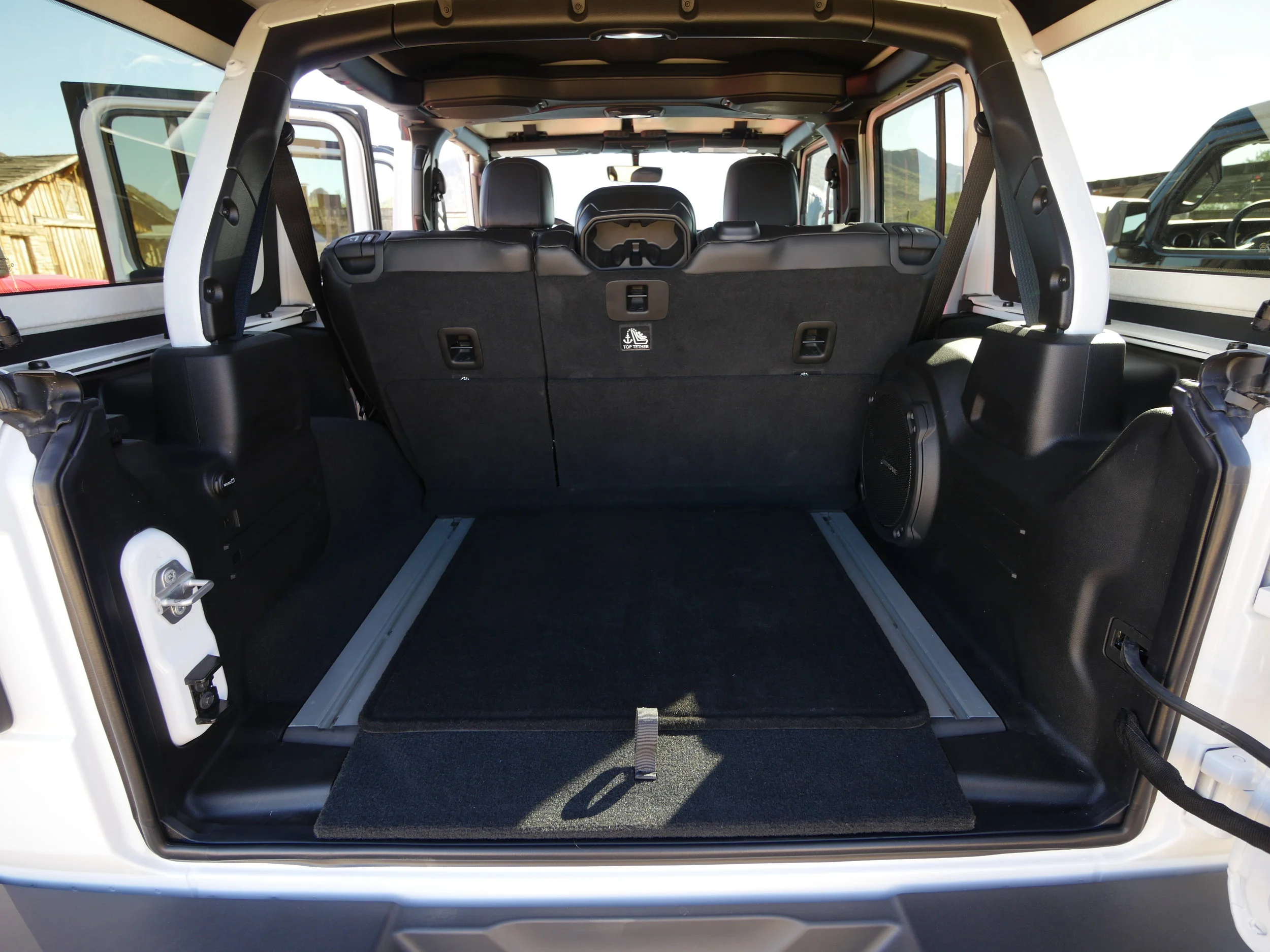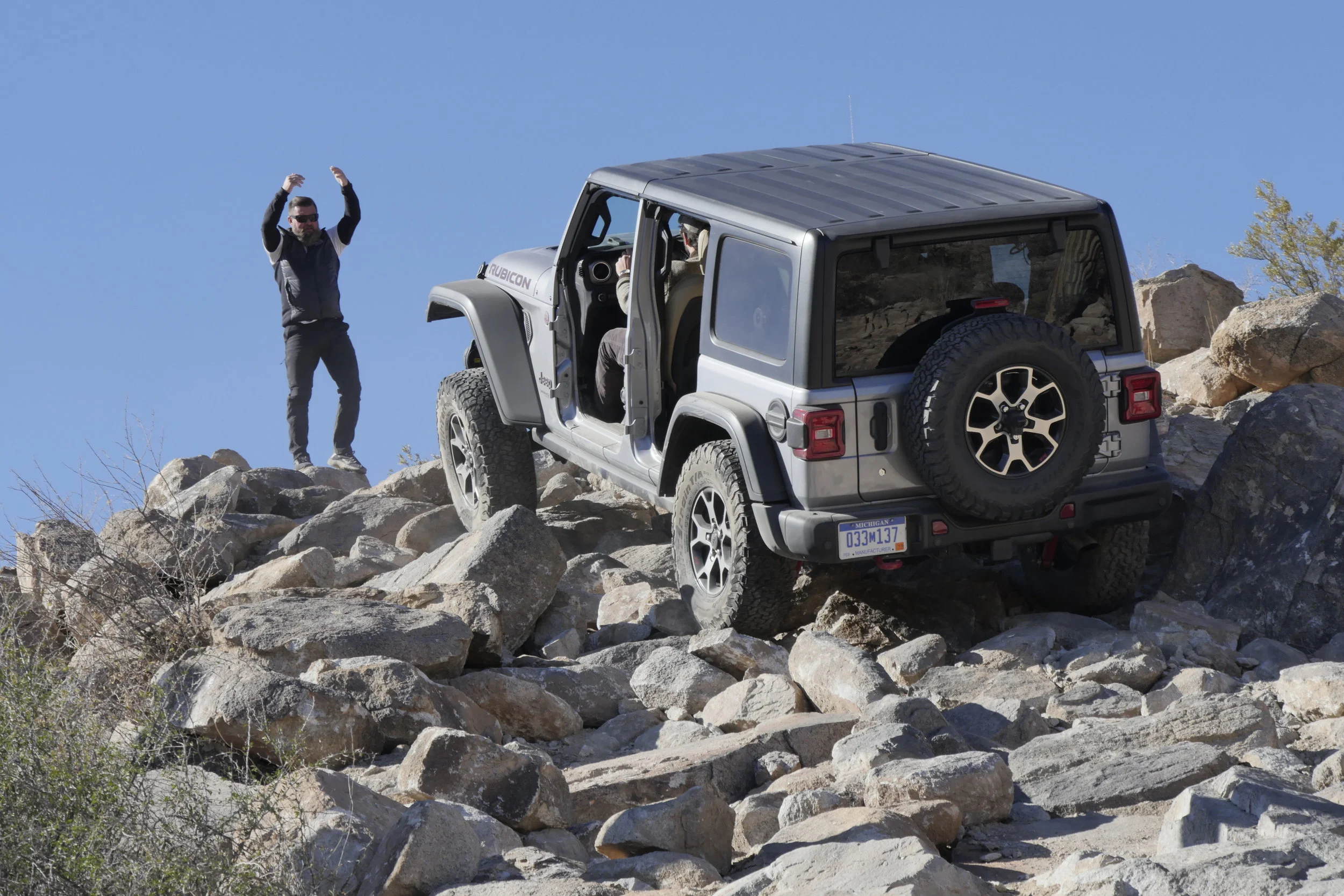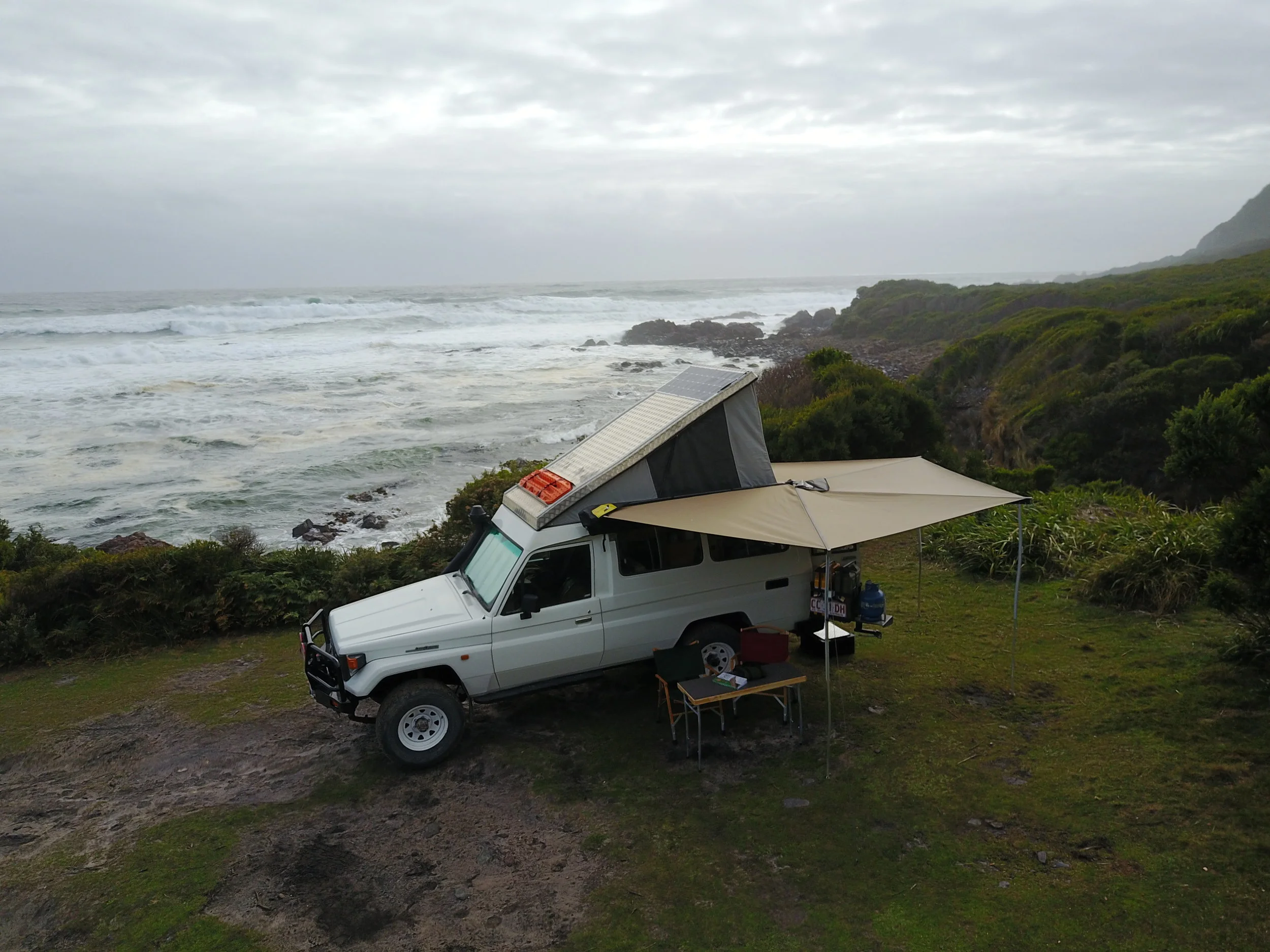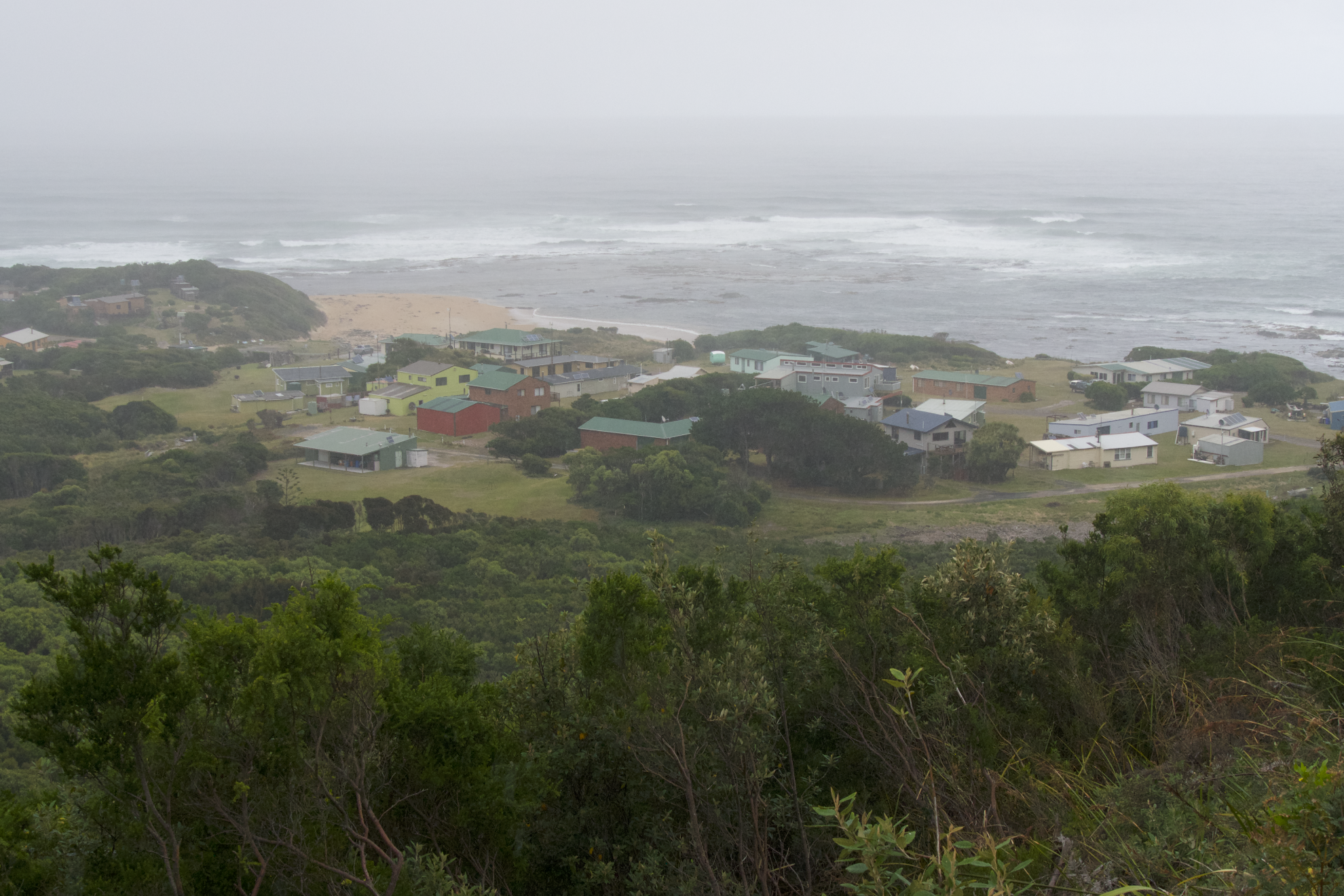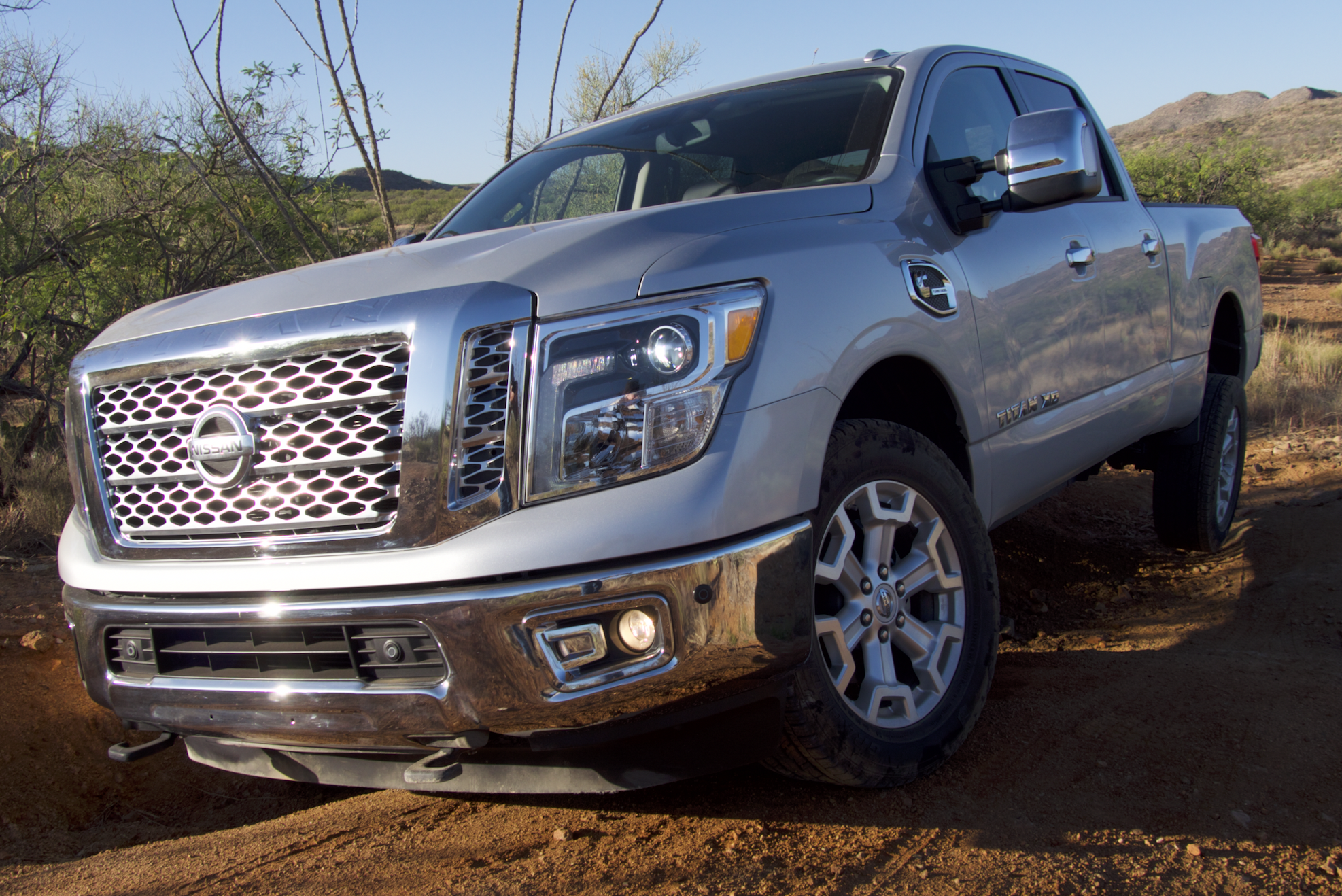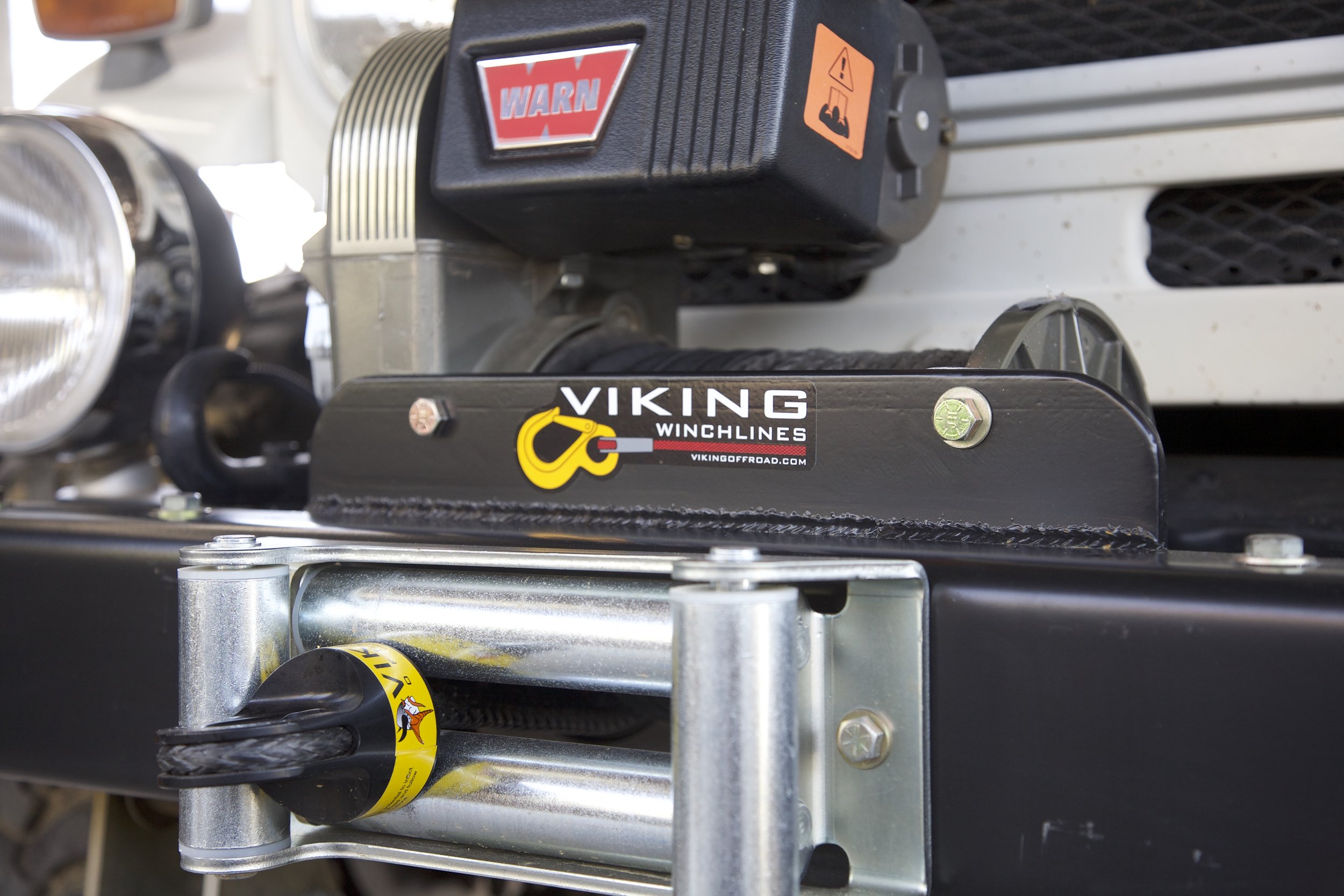As the owner of an FJ40 Land Cruiser in the 1980s, my attitude toward its Jeep corollaries—then the shorter-than-FJ40 CJ-5 and longer-than-FJ40 CJ-7—was one of arch superiority.
And with good reason. Those Jeep models were competent backcountry vehicles, but prone to numerous problems. The CJ’s undersized two-piece axle shafts were notorious for breaking, if the axle tubes themselves didn’t bend first. Frames cracked around the steering box, crossmembers, and suspension mounts frequently enough to spawn a host of aftermarket reinforcement bits. The suspension itself looked toylike alongside the mighty leaf springs on the Land Cruiser. Other issues—pitman arms, steering shaft couplers, power-steering box mounts—were well-known among owners, even if they didn’t admit them during trailside debates with drivers of foreign competitors.
In 1986 the YJ was introduced, with a better frame and beefier suspension. But the new track bars, added to increase on-road stability, could tear off at their mounts under hard trail use, and many owners simply ditched them. The Central Axle Disconnect (CAD) system proved troublesome as well. And then there were those ghastly rectangular headlamps, which made the YJ look right at home parked next to a 1976 Chevy Monte Carlo . . .
This just ain't right (Chrysler image)
Thankfully, with the 1997 TJ Chrysler returned to the round headlamps God intended for Wranglers—and, in a move that made this Toyota driver take notice, installed supple all-coil suspension (although this came more than a decade after Land Rover had done the same on the Defender). When the Rubicon Edition appeared in 2002, with Dana 44 axles, front and rear diff locks, and a 4:1 transfer case, owners of FJ40s (and Tacomas, and Pathfinders, and . . .) suddenly found pressing household chores that needed doing when asked out on trail runs by friends eager to show off their new ride.
Then came the JK and, critically, its 116-inch-wheelbase, four-door Unlimited version. In 2009-2010 I spent a year with a review Wrangler Rubicon Unlimited, during which I covered slightly over 35,000 completely trouble-free miles. I was less than impressed with the 3.8-liter V6, which offered neither a surfeit of power nor impressive fuel economy. The vehicle’s cargo capacity and GVWR were also underwhelming. Other than those gripes, I found the Wrangler to be . . . extraordinary. Here, at last, I thought and wrote, was an American vehicle fit to pit itself against the best expedition machines on the planet—the Land Rover Defender, the Land Cruiser 70-series Troop Carrier, the Mercedes G-Wagen. A couple of years ago I tested another Rubicon Unlimited, this time with the vastly improved 3.6-liter Pentastar engine and five-speed automatic transmission. In low range, with the front anti-roll bar (not “sway bar,” as the button incorrectly claims) disconnected, and both diffs locked, it would traverse terrain I would never have dreamed of tackling in the FJ40—or even in a late and lamented 80-series Land Cruiser with its own diff locks but inferior crawl ratio and no anti-roll bar disconnect. Around the same time, Tom Sheppard and I included the Jeep Wrangler Rubicon Unlimited in the fourth edition of the Vehicle-dependent Expedition Guide, in a four-vehicle comparison chart of what we considered the best choices for long-distance backcountry travel.
When FCA confirmed that it was working on a redesign of the JK Wrangler, those trolls who love to make others as unhappy as they are began flooding the forums with the worst sorts of fake news. It was “confirmed” that the new Wrangler would have independent front suspension, abandoning the sturdy solid axle. Then it was confidently announced that the new vehicle would have all-independent suspension, and furthermore that the separate, fully-boxed chassis would be swapped for unibody construction. It was by then actually known for a fact that the new Land Rover Defender, due out in 2018 or 2019, would follow the unibody/IFS/IRS template, so it took little for Wrangler fans to begin pre-emptively drinking heavily in dread anticipation.
Perhaps in an altruistic attempt to stem a rising tide of alcoholism among loyal customers, FCA initiated a studiously rationed trickle of leaked specifications, and photos of test mules “disguised” with little more than a few cardboard panels. Slowly, as these circulated, sighs of relief could be noted in those fan threads. Clearly the new Wrangler would still ride on solid axles. The body still sat on a separate chassis. The sun would still rise in the east.
Okay. But what about changes? Improvements? This was, after all, the first redesign of an iconic model in ten years, yet at a glance the vehicle looked virtually indistinguishable from its parent. The windshield appeared to be a little more raked, indicating improved aerodynamics and suggesting to the cognoscenti that the traditional fold-down capability (originally designed into the WWII Willys MB simply so it could be crated) was probably deleted. No big deal as the procedure in the JK was such a monumental pain no one did it anyway, even for fun-in-the-sun beach drives. The seven-slot grille was still in place—not even the leisure-suited and blow-dried designers responsible for the YJ’s headlamps had messed with that—but it, too, seemed to have gained some slope. Other than that it was difficult to detect many differences.
Thus, both diehard fans and newer converts such as myself were at the same time relieved that FCA had not messed with the basic recipe of the Wrangler, and curious as to how they would justify the label of “new” rather than simply “updated.”
Sitting in the press introduction at Tucson’s swank Dove Mountain Ritz Carlton, and listening while Mark Allen, Ryan Patrick Joyce, Dave Bustamonte, and Brian Lee discussed their respective roles in the design of the new Wrangler, I began to understand. Whether describing something as routine as the layout of the dash, or as critical as the construction of the chassis, there was a remarkable sense of assurance in the team, a confidence that the basic design and look of the Wrangler was in no need of spurious marketing-driven change for the sake of change. Not once did I hear anyone use the phrase, “Dynamic styling touches,” or, “Bold new lines.” Instead I was informed that:
- The chassis—still fully boxed of course (listening, Toyota?)—now comprises 80 percent high-strength steel. It is 18 percent more torsionally rigid than the previous chassis, yet lighter.
- The hood, doors, hinges, and windshield frame are now made from aluminum. The rear swing gate frame is magnesium. Overall weight savings is claimed to be 200 pounds on the Unlimited.
- The already stout Dana 44 axles have been further strengthened. Crawl ratio on the Rubicon is now 77:1 with the auto transmission, and an astounding 84:1 with the manual.
- Despite (or because of) a 2.4-inch longer wheelbase, the Rubicon Unlimited has improved approach and departure angles. Even the ramp breakover is said to be improved. Fording depth is an excellent 30 inches.
- Despite the longer wheelbase, the turning circle has been shortened by a foot. Electro-hydraulic steering is now standard.
- An optional front bumper is winch-compatible and has removeable side sections to enhance clearance.
- Not only does the windshield still fold, it now does so by removing only four bolts, and actually folds flatter than the JK’s to enhance visibility. Additionally, the optional Sky One-Touch powertop opens the entire roof at the touch of a button.
There was more—much more. But see what I mean? A huge majority of the changes to the Wrangler—which in the amalgam certainly warrant the term “all-new”—are invisible on a cursory inspection. Even the actual external styling updates—which lower the Wrangler’s drag coefficient by nine percent—could easily be missed when a new Wrangler drives past you in the opposite direction.
After the introduction, FCA first sent us on a 15-20-mile road trip in a mixture of Sport and Sahara models, some with the carried-over 285-hp/260-lb-ft 3.6-liter Pentastar V6 (now with stop/start technology), some with the new and intriguing 2.0-liter, 270-hp/290-lb-ft turbocharged four-cylinder “mild” hybrid. The latter has what looks like a massive alternator mounted low on the passenger side of the engine, connected to the crank via a serious-looking belt. It powers a 48-volt system that returns power to the crank at low speeds (thus essentially eliminating turbo lag), and incorporates regenerative braking. This engine will actually be an extra-cost option, and whether that flies with American buyers, who traditionally view the larger engine as the premium choice, will probably depend almost entirely on its fuel economy numbers, which have not yet been released. In terms of power the consensus among the journalists who tried it was that it felt a bit stronger at low RPM than the V6—an impressive performance. Personally I have long argued that a four-wheel-drive vehicle’s engine should produce more torque than horsepower, so three cheers there. Transmissions include a six-speed manual and an eight-speed auto.
(It was also confirmed that a turbodiesel engine is on the way, but not until late in 2018. Damn. But Oh boy.)
I teamed with Matt Scott (U.S. distributor of MaxTrax in his off-journalist hours) for the on-road drive, on a mix of freeway, two-lane, and dirt roads. I felt immediately familiar and comfortable in the driver’s seat; Matt, however, who is six-something and long-torsoed, had to adjust the passenger seat carefully to avoid interference between the roll cage and the back of his head. But I have no sympathy for tall people. I liked the simple horizontal orientation of the major instruments and vents on the dash, and the manual as opposed to touch-screen adjustments for the climate control. Our Sahara model had the smaller display screen (they vary depending on model and options from five up to 8.4 inches), but it was still legible. I was pleased to note some rudimentary insulative fabric panels in the fiberglass roof. The ’09 had none, and would fry one’s hair driven in 110º southern Arizona weather. I was disappointed to find the window controls remain in the center binnacle rather than on the doors—in a year I never got used to that.
All the interior materials seemed absolutely first-rate and suitable for the Wrangler's intended use. The stitching is real, not stamped, and all the controls operate deliberately, indicating you could still use them confidently on a rough road. The seats are supportive, the steering wheel is comfortable, and the major instruments visible, including the screen between the speedometer and tach, which scrolls through a wide range of functions, including tire pressure and a "tilt-o-meter," as my wife refers to them derisively.
One of the Wrangler's glaring disadvantages in comparison with other iconic expedition vehicles has been cargo volume and GVWR. Looking at the rear of the new one, the space appeared no larger but seemed more square, which is an improvement. Thankfully the goofy floor-mounted speaker is gone, although its vertically oriented replacement is larger in diameter and still intrudes on precious cargo space. A welcome addition is the brace of tie-down tracks to secure gear; however, they are inset so far toward the center of the space—and that minimal space will be so packed with stuff—that usability when loaded for a long trip will be questionable. For a traveling couple who can lower the back seat (which folds flat), the cargo situation improves significantly as volume goes from 31 to 70 cubic feet, but for a family of four it's going to be tight.
Also problematic is the load capacity. The Sahara lists 1,187 pounds including passengers, etc., but the Rubicon Unlimited (the natural choice for an extended journey in dubious terrain) allows just 900. While your friends with Land Cruiser Troopies, Land Rover Defenders, and Mercedes G-Wagens are tossing in fridges, chuck boxes, and oversized sleeping bags with running deer on the lining, you'll be packing very carefully indeed. (Given the identical chassis, brakes, etc. between the Sahara and Rubicon, I suspect the lower figure for the Rubicon has to do with the spring/shock rates and concern about the effects when the anti-roll bar is disconnected, so as an owner I wouldn't hesitate to upgrade the rear springs and shocks and use the higher limit. But you're still well below the ton or so allowed in the others.)
So—on the road? I’m always amused by the journalists who wave the flag to have the Wrangler cleave to body-on-frame construction and solid axles, then purse their lips and remark on the “harsh” or “unforgiving” ride quality. Really? Do they complain because a Carrera 4S doesn’t deliver the fuel economy of a Prius? Or because a Prius lacks the cargo capacity of a Suburban? “Horses for courses,” as the saying goes. If you want a body-on-frame 4WD vehicle with solid axles built to withstand extended use in the backcountry, it’s going to ride like a body-on-frame vehicle with solid axles. Even the original Range Rover, imbued by the wizards in Solihull with perhaps the best ride ever coaxed from the arrangement, only rode superbly within that context. When Land Rover decided to tilt the platform toward on-road comfort, they went unibody and all-independent suspension.
In fact the Sahara rides very well. The body structure feels vaultlike no matter what the surface, and the all-coil suspension does a fine job of harnessing the considerable unsprung weight of the solid axles. The single significant fault I found with the ride of my long-term ’09 was severe sideways head toss from bumps or washboard (corrugations) on only one side of the vehicle. We didn’t find a similar surface to try on this drive so I’m not sure if that’s been addressed. But having put in a couple of 800-mile days in Wranglers, I have zero complaints about on-road comfort.
After a short 80mph freeway blast, we swapped drivers. (Those same journalists who whinge about the ride also praise the Wrangler’s staunch foursquare looks, then complain about wind noise. Seriously? Come ride in my FJ40 if you want to hear wind noise.) Matt took us through Saguaro National Park West and onto a dirt road marked on our route. We were curious about the Selec-Trac full-time four-wheel-drive transfer case. In its automatic mode, it is biased toward rear-wheel drive, but can direct more power to the front wheels as needed when slip is detected. Matt decided to give it a quick test, and came to a stop, then buried the gas pedal. The Jeep surged ahead with no sign we could detect of momentary rear-drive fishtailing or a noticeable shift of traction to the front. Interesting. (When shifted to low range, the Selec-Trac transfer case locks so you always have power evenly divided between front and rear wheels.)
A short section of washboard failed to upset the Sahara’s aplomb, and the street-oriented tires (and Selec-Trac) had no problem when we were directed off the dirt road and onto a twisted and steep trail leading into the heart of the Tortolita Mountains. In a clearing among the saguaros we found a raised lunch platform, an expansive buffet—and a line of Wrangler Rubicons.
To be continued . . .






